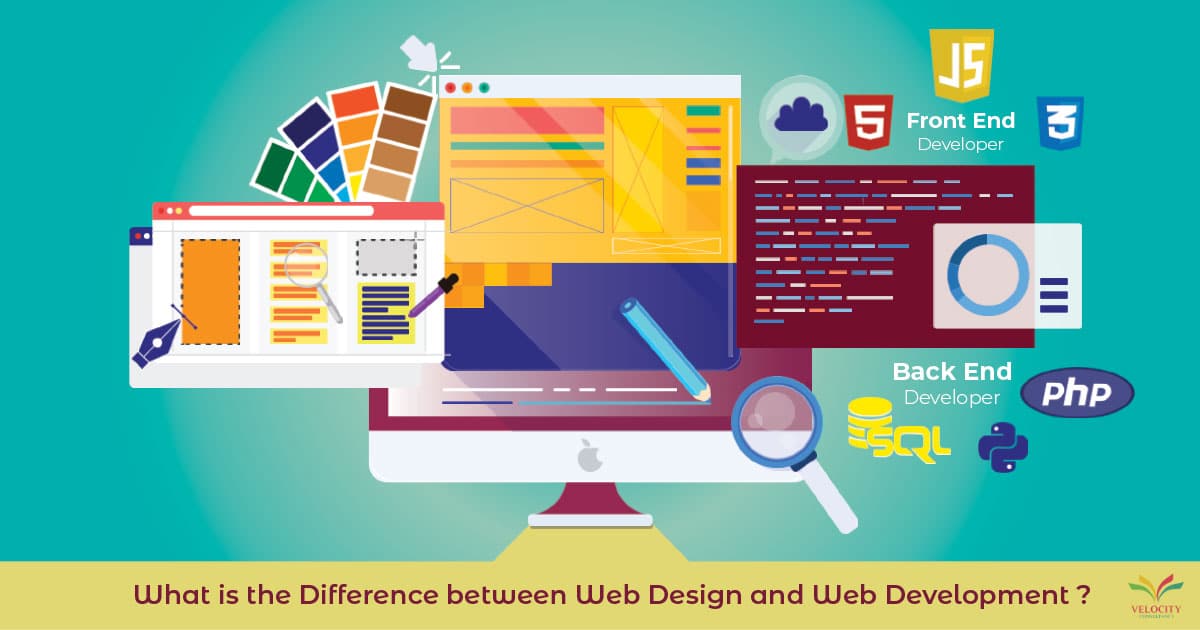Creating a Mobile-Optimized Website with Expert Web Design Techniques
Creating a Mobile-Optimized Website with Expert Web Design Techniques
Blog Article
Comprehending Individual Experience: Key Principles for Successful Website Design
In the world of internet layout, comprehending user experience (UX) is extremely important to creating systems that not only attract however additionally keep individuals. Secret concepts such as instinctive navigation and reliable comments systems play critical functions in promoting customer fulfillment. Furthermore, factors to consider for accessibility guarantee that all individuals can engage with the content perfectly.
Relevance of User Experience

In the world of web layout, one can not take too lightly the relevance of customer experience (UX) as a pivotal element that straight influences the success of a site. When customers experience a interesting and intuitive user interface, they are much more most likely to explore the web content, convert into consumers, or share their experiences with others.
Furthermore, the relevance of UX extends past mere visual appeals. It incorporates the overall capability of a site, making certain that navigation is seamless and details is easily available. Internet sites that prioritize UX are commonly perceived as even more reputable and reliable, which can have an extensive influence on conversion rates. On the other hand, poor UX can cause frustration, leading to high bounce prices and shed possibilities.
Eventually, investing in individual experience is not just a style selection; it is a critical choice that can differentiate a brand in a congested market. By concentrating on UX, companies can produce significant interactions that resonate with customers, paving the means for continual success in the digital landscape.
Usability Principles
Effective website design rests on the application of key usability concepts that make certain an internet site is both easy to use and practical. Central to these principles is the idea of intuitiveness, where users can navigate the site easily without considerable direction. Clear navigation frameworks, consisting of well-labeled food selections and regular designs, enhance this instinctive experience, enabling users to find info promptly.

Consistency is equally vital; keeping harmony in layout components, terms, and procedures across the site aids to lessen confusion. Users should not need to relearn just how to communicate with different areas of the website.
Additionally, mistake avoidance and recuperation are important for use. Sites must be designed to lessen the possibility of user mistakes, and when mistakes occur, positive and clear error messages need to assist users in the direction of resolution.
Availability Considerations
Making sure accessibility in website design is extremely important for producing comprehensive digital experiences that provide to all users, consisting of those with disabilities. Availability factors to consider include designing internet sites that accommodate varied needs, allowing customers with visual, acoustic, cognitive, or electric motor disabilities to browse and communicate properly.
To achieve this, web designers must follow established guidelines, such as the Web Web Content Accessibility Guidelines (WCAG) These standards provide a framework for making material perceivable, operable, easy to understand, and durable. Secret techniques include making sure adequate color contrast, supplying message alternatives for non-text material, and making sure key-board navigability.
In addition, semantic HTML ought to be used to improve display viewers compatibility, permitting official source individuals with visual impairments to comprehend the structure and significance of material without effort. web design. why not try here Giving clear, succinct guidelines and utilizing uncomplicated language can better enhance usability for individuals with cognitive impairments
Routine availability screening, including genuine customers with disabilities, is important to recognize obstacles and boost the customer experience. By focusing on availability, internet designers not only abide by lawful criteria yet likewise promote a more equitable digital landscape, inevitably profiting every person via boosted use and interaction.
Aesthetic Design Components
A myriad of aesthetic design components plays a crucial duty fit individual perceptions and experiences on an internet site. These aspects include color design, typography, design, images, and whitespace, each adding to the overall aesthetic appeal and performance of a site.

Color design stimulate emotions and can influence customer activities; as an example, cozy colors might create a feeling of urgency, while cool shades usually promote calmness. Typography, on the various other hand, impacts readability and can develop a brand's personality - web design. The selection of font style and size need to line up with the website's purposes and target audience
Imagery, including photos and symbols, enhances narration and can dramatically affect customer interaction. Top quality visuals develop a sense of professionalism and trust, while poor-quality images might detract from the customer experience.
Layout and whitespace are just as essential, as they lead individuals via the material. A well-structured format helps individuals find details rapidly, while ample whitespace avoids mess, helping with an extra satisfying surfing experience.

Checking and Iteration
Customer testing and iteration are basic components of an effective web design procedure. These practices make it possible for designers to collect important feedback from actual users, guaranteeing that the end product satisfies their assumptions and demands. Individual screening entails observing how actual individuals interact with a website, determining usability problems, and understanding individual actions. This straight comments is crucial in exposing discomfort points that might not be apparent during the layout phase.
Model, on the various more helpful hints other hand, is the process of fine-tuning the layout based upon the insights acquired from individual screening. By making step-by-step adjustments and re-evaluating the design, teams can improve capability, improve aesthetic appeals, and maximize user engagement. This cyclical technique promotes a society of continual enhancement, enabling developers to adjust to user needs and emerging patterns efficiently.
Additionally, incorporating both customer screening and model right into the design process results in more educated decision-making and eventually causes an extra user-centered item. By welcoming these concepts, internet developers can develop extra instinctive, interesting, and effective experiences that reverberate with their target audience, eventually driving higher user complete satisfaction and retention.
Conclusion
To conclude, user experience is a vital part of reliable website design, including functionality, availability, and aesthetic considerations. Sticking to well-known principles enhances customer contentment and involvement, promoting a much more comprehensive on-line atmosphere. Continuous screening and model function as important processes for dealing with and determining user discomfort factors, guaranteeing that internet styles remain versatile to developing demands. By prioritizing these components, web developers can create user interfaces that not only fulfill customer expectations yet likewise advertise long lasting links.
In the realm of web style, recognizing customer experience (UX) is critical to creating platforms that not just draw in however likewise keep users.In the realm of internet design, one can not ignore the value of user experience (UX) as a crucial component that straight affects the success of a site. Customer testing involves observing just how genuine users engage with an internet site, determining functionality issues, and comprehending customer behavior.In verdict, customer experience is a critical element of effective internet layout, including use, accessibility, and aesthetic considerations. Constant testing and model offer as crucial procedures for resolving and recognizing customer pain factors, ensuring that internet styles continue to be versatile to developing needs.
Report this page